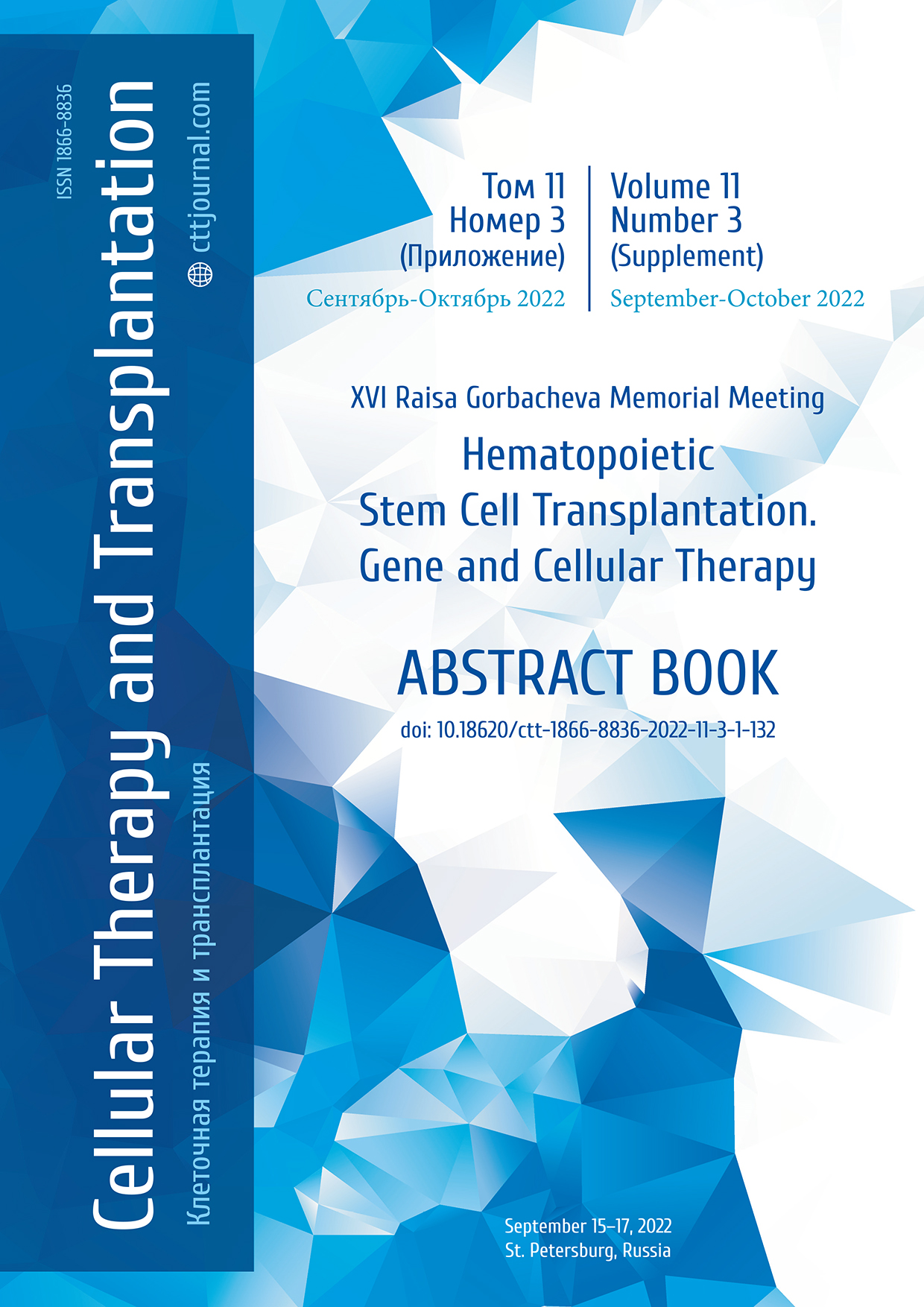AW-03. Prophylactic and preventive therapy with azacitidine and donor lymphocyte infusions after allo-HSCT in children with acute myeloid leukemia
Liubov A. Tsvetkova, Olesya V. Paina, Zhemal Z. Rakhmanova, Anna A. Osipova, Polina V. Kozhokar, Аnastasia S. Frolova, Elena V. Semenova, Alexander D. Kulagin, Ludmila S. Zubarovskaya
RM Gorbacheva Research Institute, Pavlov University, St. Petersburg, Russia
Contact: Dr. Liubov A. Tsvetkova, phone: +7 (921) 643-39-05, e-mail: tsvetluibov@mail.ru
Summary
Allogeneic hematopoietic stem cell transplantation (allo-HSCT) is a potentially curative option for patients with high-risk acute myeloid leukemia (AML). Nevertheless, relapse of the disease develops in 30-40% of recipients. In recent years, combined immunotherapy with hypomethylating agents and donor lymphocyte infusions (DLI) has shown promising results. The effectiveness of this therapy has not been studied enough in children with AML. Our aim was to study the efficacy and safety of combined therapy with azacitidine and DLI for prophylaxis and relapse prevention after allo-HSCT in children with high-risk AML.
Patients and methods
The study group included 13 children with AML at the median age of 12 years (range, 1 to 7 years). Preventive DLI was performed in 10 patients (78%). Indications for the preventive therapy included evidence for minimal residual disease (MRD) in 6 patients (46%); cytogenetic relapse with mixed chimerism (MC) at 85% detected in one patient (8%); MC levels of 80 to 95% were registered in 3 patients (23%). Prophylactic DLI were performed in 3 patients (23%) due to the following reasons: absence of remission at HSCT (n=1), MRD positivity (n=1) before HSCT, AML evolving from myelodysplastic syndrome (n=1). In 6 patients (46%), allo-HSCT was performed from haploidentical donors; 4 patients (31%) were transplanted from a matched unrelated donor; one patient (8%), from mismatched unrelated donor; HSCT from sibling was performed in 2 cases (15%). Two patients received therapy after 2nd HSCT. 2 patients developed a clinically significant acute GVHD. Azacitidine therapy was initiated at a median of 124 days (D +42 to +1204) after HSCT. Azacitidine was administered for 5-7 days at a dose of 35-75 mg/m2. The median number of azacitidine courses was 3 (1-6). The median number of DLI was 3 (1-8). DLI was administered at the end of azacytidine course. The first median DLI dose was 1.0×105 CD3+ cells/kg (1.0×104-1.0×106), the median total dose comprised 1.5×106 (1.0×104-6.8×107) CD3+ cells/kg. Clinical response to the therapy was defined as achievement of MRD-negative status, and decrease of aberrant transcript copies by 1 log or more, as well as conversion of MC to full donor chimerism (FDC). Overall (OS) and disease-free (RFS) survival were estimated from the time of the first azacitidine administration to death, or last follow-up/relapse, respectively. Kaplan-Meier curves were plotted to estimate OS and RFS levels. The Mann-Whitney U-test was used to compare incidence of response between the groups with different chimerism levels. Statistical analysis was performed using IBM SPSS Statistics v 26 and EZR (Easy R) Free statistical software.
Results
At the median follow up of 12 months, OS was 69%, RFS was 62%. The incidence of response in patients with MRD-positive status reached 83%. Among patients who received preventive therapy, the incidence of response was higher in patients with full donor chimerism, i.e., 83% vs 0%, p=0.014. At the same time, RFS values were similar between these groups: 75% vs 50%, p=0.6. Three patients died from the leukemia progression (23%), one patient (7.6%) deceased from severe graft hypofunction. One patient developed grade III toxic hepatitis during the first course of azacitidine. Therefore, the second course of therapy was carried out at a reduced dose. Chronic GVHD was diagnosed in two patients (15%), i.e., with moderate-grade skin GVHD, and with severe lung GVHD in the patient with a history of severe skin GVHD. We did not observe acute GVHD after combination therapy. The patients received effective combined immunosuppressive therapy with JAK2 inhibitor and tyrosine kinase inhibitors.
Conclusions
Combination therapy with azacitidine and DLI proved to be effective in AML children with high risk for relapse after allo-HSCT. The best response to therapy was achieved in patients with MRD and full donor chimerism. This therapy did not increase risk of developing toxic complications, and may be performed in outpatient setting.
Keywords
Acute myeloid leukemia, azacytidine, donor lymphocyte infusions.


